Calf Care Around the World: Mary Chamberlain - Oregon, USA
The final stop on our tour of Calf Care Around the World is in Vale, Oregon. Mary Chamberlain of Dairylain Dairy shares with us some secrets about caring for Jersey Calves.
Mary grew up on a 50 cow Holstein dairy in North Carolina. She studied at North Carolina State for her bachelor’s degree and went on to get a master’s degree in dairy nutrition from UC Davis. Mary’s husband, Jason, also has a master’s degree in dairy nutrition from Oregon State University. Jason has his own dairy nutrition consulting service and together they manage the Chamberlain family dairy. Jason oversees the cows, and Mary oversees the calves. The Chamberlain’s raise registered Jersey and Jersey-Limousine cross calves, usually feeding approximately 140 on milk year-round.
Q: What protocols do you have at birth that help your Jersey’s get off to a good start?
A: It starts in the calving pen. We calve on a dry pack, and we have found keeping it clean and bedded year-round is important to keep calves healthy.
Colostrum is also important. The industry recommendation is a 22 or above brix reading for first feeding colostrum. In my opinion that is not high enough for Jersey’s. In our herd the cows are capable of averaging a 28 brix reading, and we have found that quality to be where our calves do the best. Especially in times of stress.
The first feeding our calves get is 3 liters of colostrum with a brix reading of 28. Their second colostrum feeding is 18-20 brix, and the 3rd and 4th feedings are transition milk.
For a long time, we used the Product X at birth, and then we ended up switching to Sync. Every calf gets Sync mixed into their first feeding of colostrum. I love that this product gives us a color tracker. After a calf receives Sync, the poop turns green so it’s easy to tell which calves actually received the product.
Q: Tell us about your milk feeding program:
A: Jason’s mom never could get milk replacer powder to work in our calf program. I have found the same thing. For the first 70 days our calves get fed milk straight from our bulk tank. We feed 6 liters per calf per day, split into 2 feedings of 3 liters. A lot of people think that the research for higher milk feeding is just for Holsteins, but it isn’t, the Jerseys can and will drink and utilize 6 liters per day.
We use a step-down approach for weaning. At 40 days we drop down to feeding 5 liters per day, and at 50 days we drop them down to 4 liters per day. At 60 days they are moved out into a group pen of 8 calves, and at 70 days they go down to 2 liters of milk per day. The calves are completely weaned at 80 days. After calves transition to group pens we mix the milk half and half with powder so we have enough to feed all the calves.
Q: What strategies do you use to help your Jersey calves get through times of illness?
A: Jersey calves are hard to raise. Young calves of this breed do not thrive until after they reach about one month of age, after that they are super aggressive. We have found that adequate nutrition is necessary for a healthy calf. Feeding young calves 6 liters of tank milk really helps to fuel their growth and their immune system.
We also mix Surveillance and a vitamin and mineral package into our milk. We have seen positive results from that, as it boosts nutrition and supports the immune system. When we do get a sick calf, we treat with oral electrolytes and Sync.
Q: How easy is it for you to find laborers?
A: We will take anyone who wants to work. Currently we have 2 part time employees that feed calves in the morning. They have been with us for more than 10 years. We have a full-time guy that works with the calves and does scraping at the dairy, and a part time high school kid that helps with relief feeding. I am there every afternoon.
It can be tough to find employees, as they prefer to work where they are offered housing. Here in Malheur County most Hispanic workers live near the onion fields.They are provided housing on those farms. In the future we will need to figure out some way to provide housing to be more competitive at finding employees.
Mary thank you for taking the time to share with us! You do a fantastic job with your Jersey calves!
Written by: Mariah Gull, M.S.
